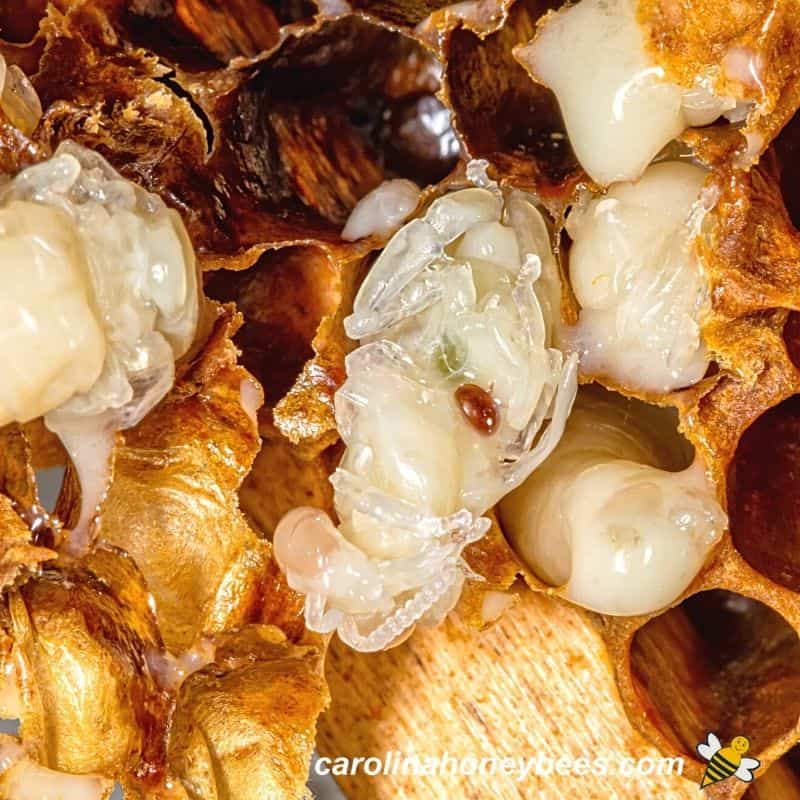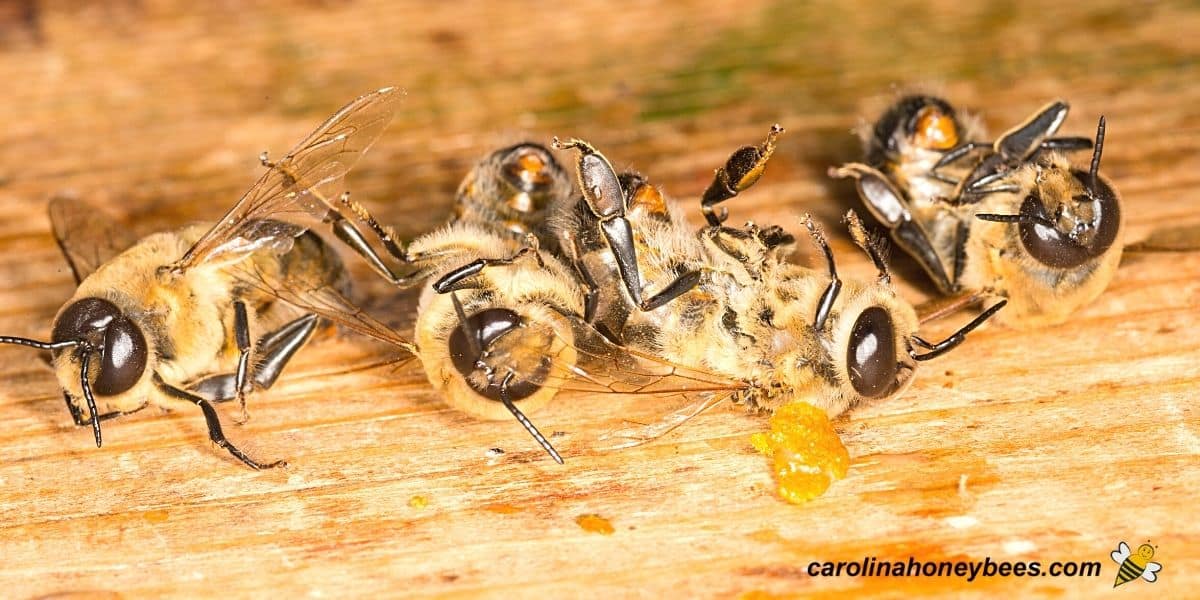The Drone Bee
Among the thousands of bees in a colony, you will only find a few hundred honey bee drones or males. Present during the warm months, drone bees are usually absent over Winter. These boys do not work to support daily hive life but they have a very important role to play in the hive. Why are drone bees important?

The honey bee drone is an often-misunderstood member of the colony. Of all the bees in a beehive, we beekeepers often think of them as a liability or “drag on colony resources”. However, you need to understand the whole story to really appreciate them.
Role of Honey Bee Drones
In truth, the honey bee drone does not do much inside the beehive. These bees sleep or rest and hang out – waiting for a warm afternoon to fly out looking for queens.
He may help himself to a taste of honey from an open cell or he may wait for one of the house bees to bring it to him. (I could say something about that but I won’t ;))
Unlike worker bees, they do not gather pollen or nectar and perform no jobs to support the colony.
Drones can help in maintaining proper hive temperatures – cooling the hive in Summer and providing some heat on cool days. But, the primary role of drone bees involves reproduction and mating with virgin queens.

Drone Anatomy
Beekeepers rarely see male bees in the field but we often see them during hive inspections. Drone bees are noticeably bigger than female workers.
They are often mistaken for the queen by beginning beekeepers. However, they lack the long pointy abdomen of the queen. Drones have a thicker body and round fuzzy rear-end.
One of the most noticeable characteristics of a drone is the large eyes that cover the top of the head. Like other colony members, drone bees have 5 eyes.
Their two large eyes are especially important. They need great eyesight to watch for queen bees at mating time.
You won’t see a stinger on these boys. They have no reason for one as they play no role in colony defense.

How Drones are Made
Drone bees develop from unfertilized eggs through a process called “parthenogenesis”. The queen bee can lay fertilized and unfertilized eggs – those not fertilized with semen become male bees.
Because they receive no genetic material from a father, male bees are haploid. They have 16 chromosomes instead of 32 like their diploid sisters.
Worker bees emerge as adults in 21 days from the egg being laid – but a drone bee requires 24 days from egg to maturity. Varroa mites prefer drone brood because of the longer capped period.

Because they are bigger bees, they need a larger brood cell. Their cell is slightly larger in diameter (across) but it must be longer too.
Once capped, the brood will protrude from the surface of the comb. This gives capped drone brood the characteristic bullet shape. These are sometimes mistaken for mature queen cells but they do not hang down from the comb.
When we see drone brood in early Spring, we know that bee swarm time is coming. Good patterns of drone brood are actually a good sign. It shows that your bee colony is strong enough to produce drones for mating.

Reproductive Role
Drones are mature and fertile starting at about the age of 10 – 12 days. But, mating does not take place inside the hive- honey bee reproduction requires outside flights.
On warm sunny afternoons, males fly from the hive to look for virgin queens. They gather in drone congregation areas to watch for queens. We don’t really know how they find these areas.
When a virgin queen is sighted, several males give chase. While in flight, the drone bee grasps the queen.
If she opens her sting chamber, the drones penis everts and semen is ejaculated into the queen. The male becomes paralyzed and tumbles backward.
On average, the queen will mate with 12-20 different males during her nuptial flights. This increases genetic diversity because the males are from different colonies. And, drones will mate with virgin queens of other races.
Directly after mating, the drone falls to the ground and dies. Those that do not mate, return to the hive to try again another day.
This continues during the warm season with unsuccessful drones having a life span of a month or two.

End of Life
Woe unto the drone honey bee who fails to fulfill his mission of mating with a queen. He will likely be unable to pass his genetic material to the next generation.
The colony does not need drones during Winter. So, why feed them? As Fall approaches, any remaining drones will be thrown from the hive and refused re-entry. There, they die-bee life is hard.
FAQs
A drone honey bee is thicker and larger than worker bees with a fuzzy bottom. The distinguishing feature is the two large compound eyes that cover the top of the head.
After mating with a queen, the drone bee’s reproductive parts are torn from its body. The drone falls to the ground and dies.
Drones are consider expendable and easily replaced as they do not work. If the temperatures drop too low and the bee cluster contracts, bee brood on the outside edge may chill. The drone brood is the first to die.
The number of drones in a colony varies with season, weather conditions and genetics. Seeing over a thousand in a strong colony in Spring is not unusual.
A hive inspection with only drone brood is in big trouble. This may be a sign of a lost queen or a drone laying queen that has run out of semen. The beekeeper will need to intervene in hopes of saving the hive by buying a new queen.
No. While varroa mites prefer drone brood, this does not mean that having drones attracts mites outside the hive.
A Final Word
In a balanced well-fed colony with a good queen, a population of honey bee drones is a sign of good health. Beekeepers should not make strong efforts to control the drone population. It is quite possible that they serve purposes we can not yet understand.

